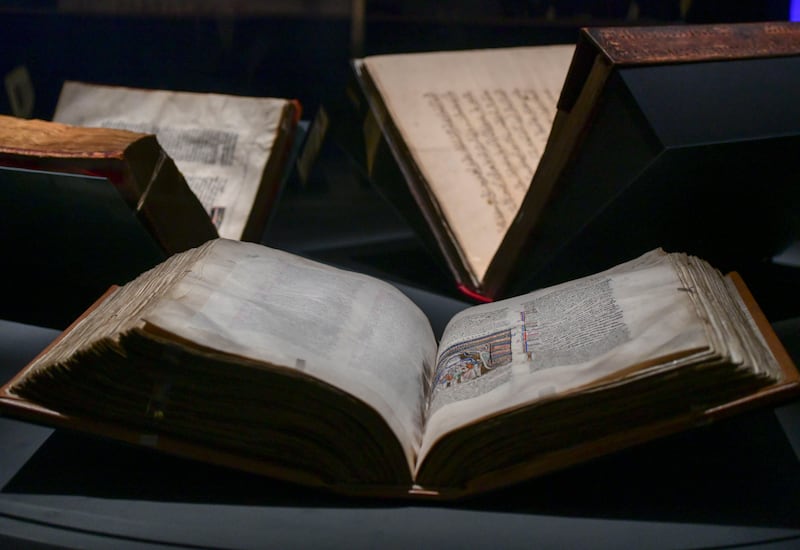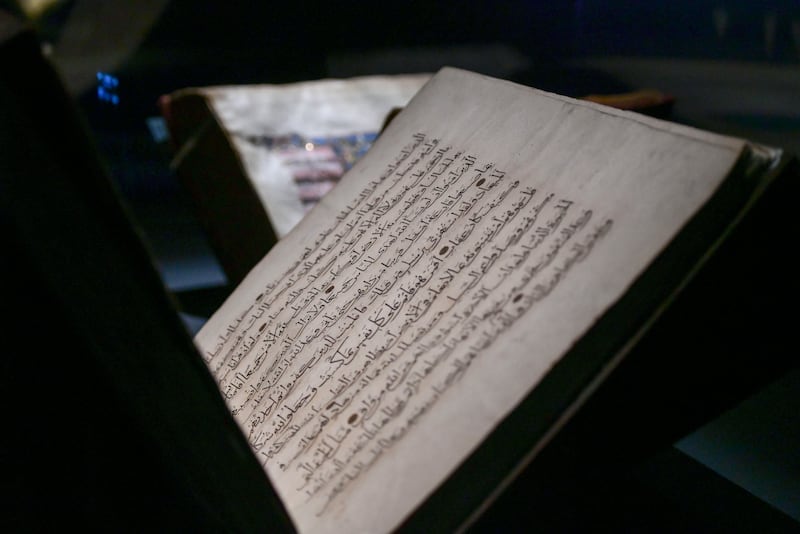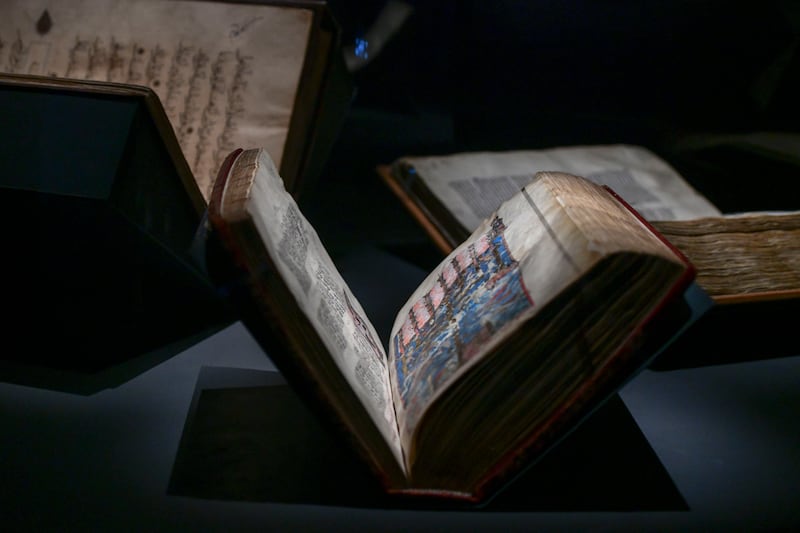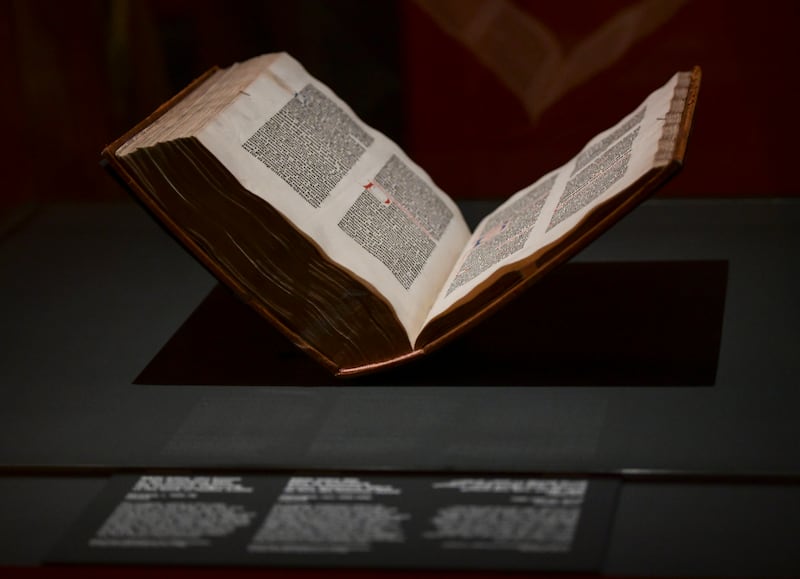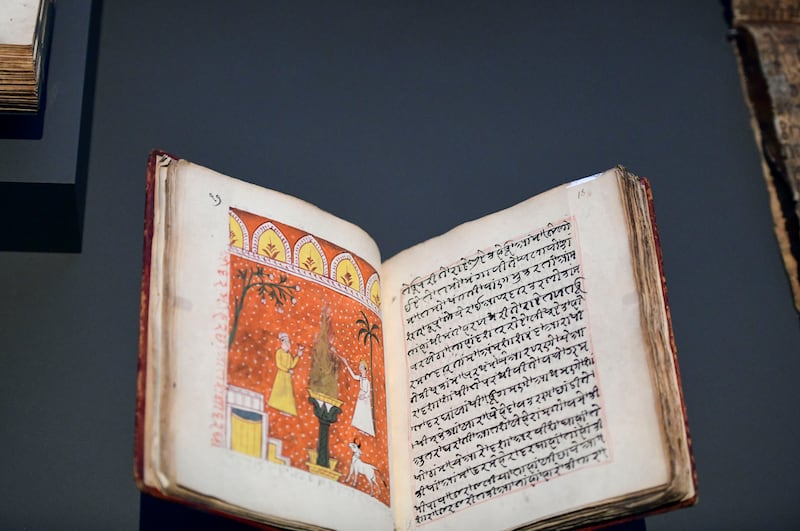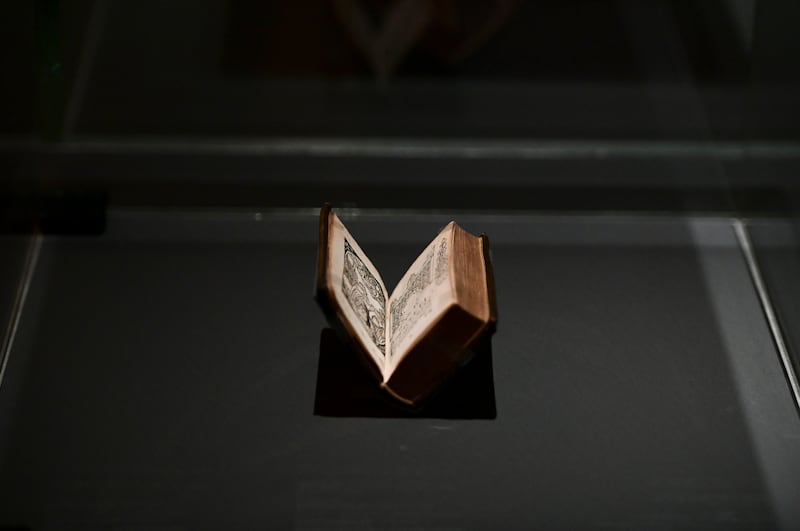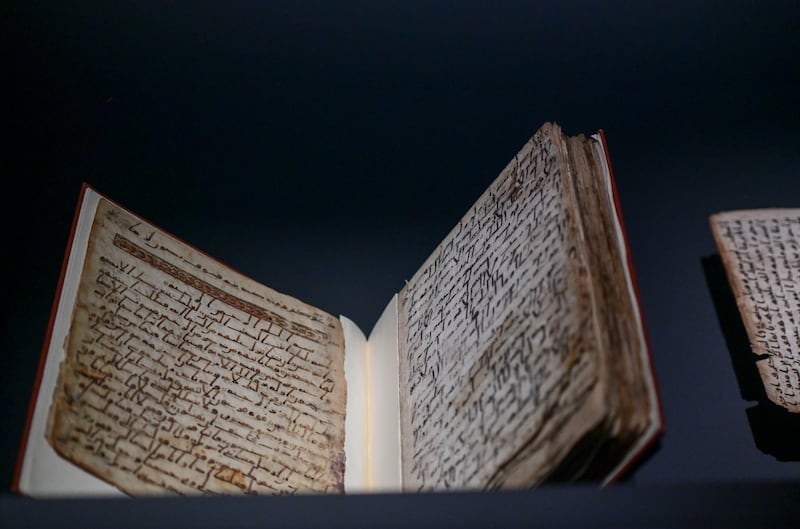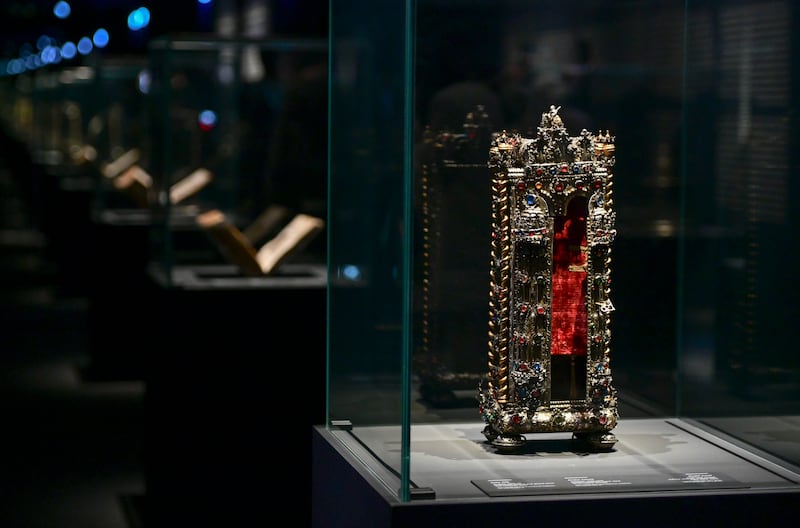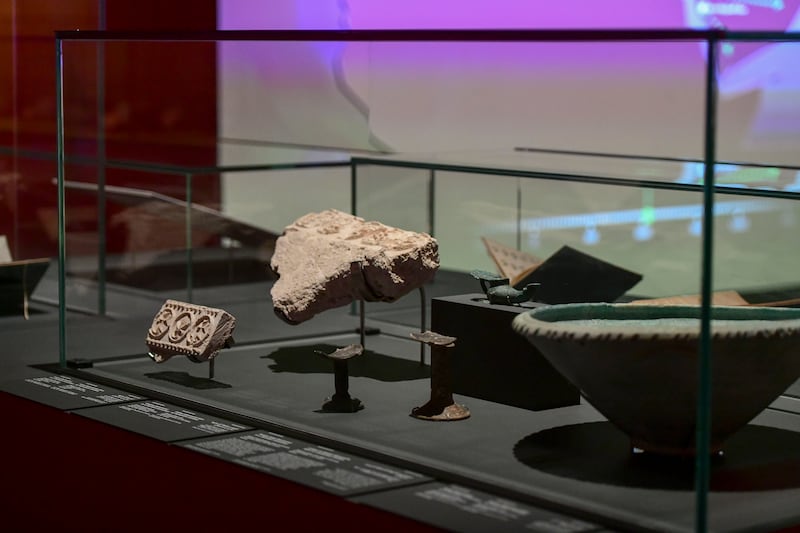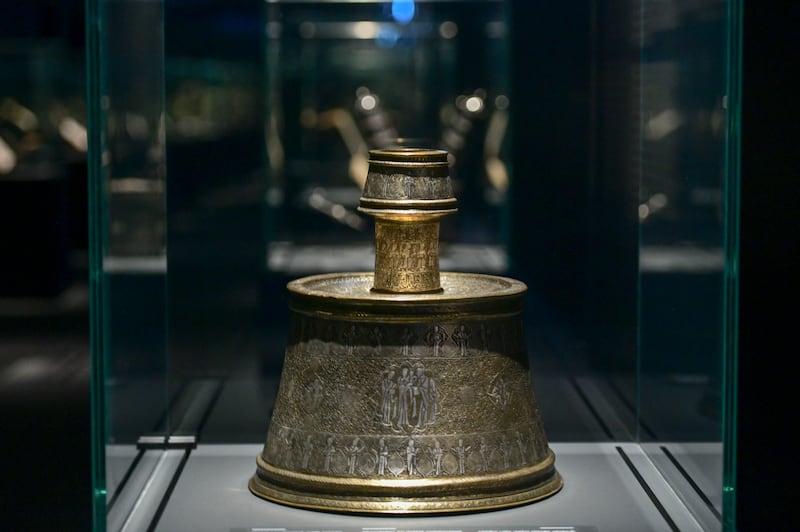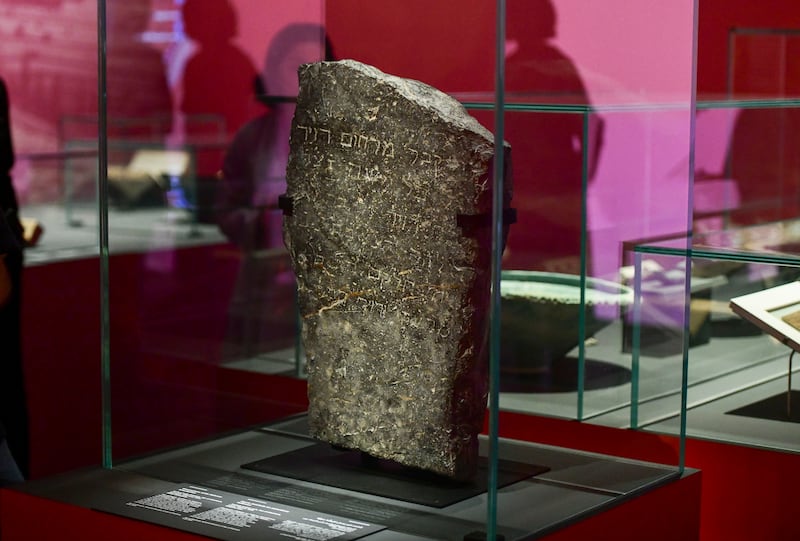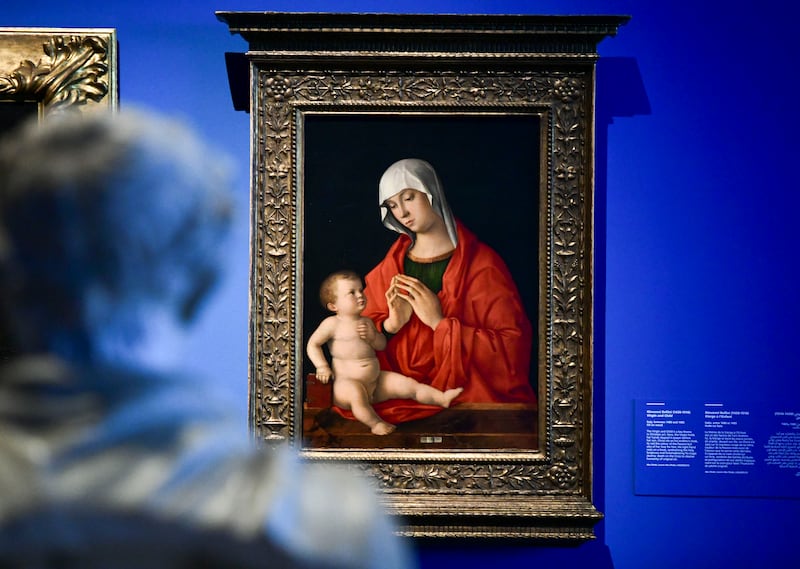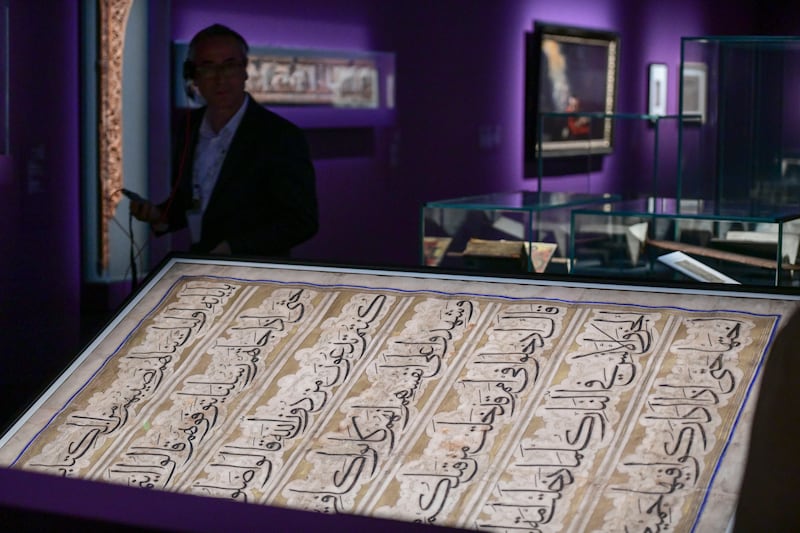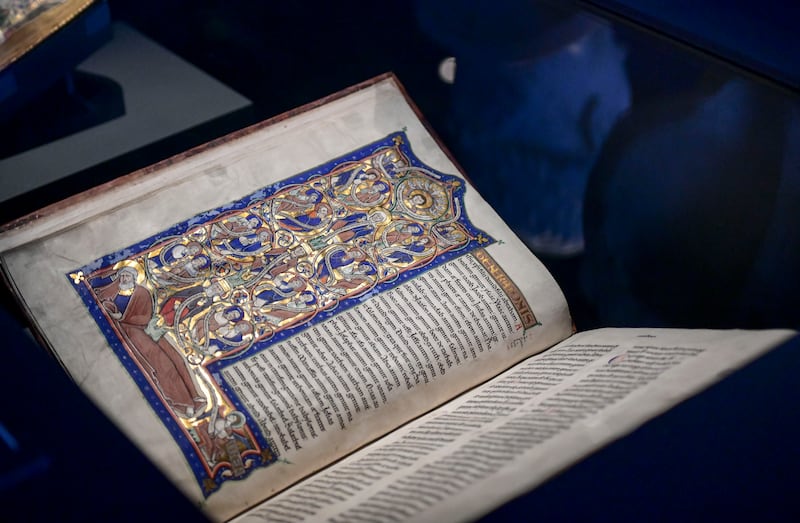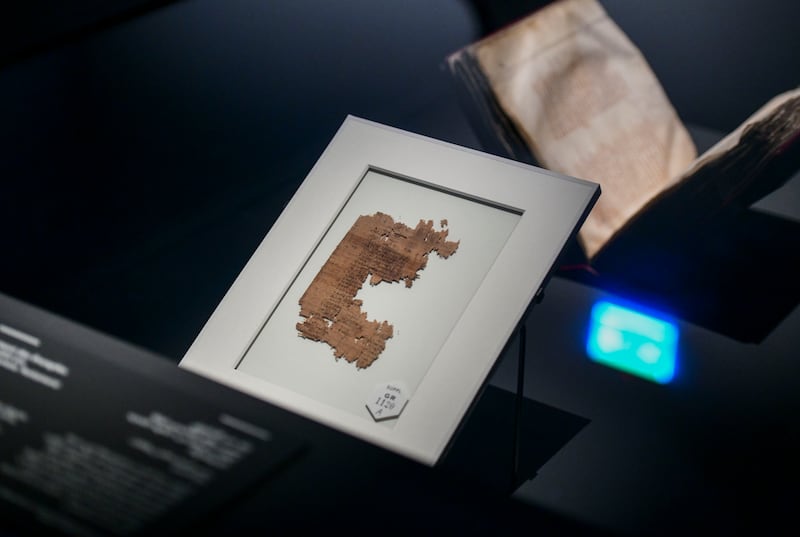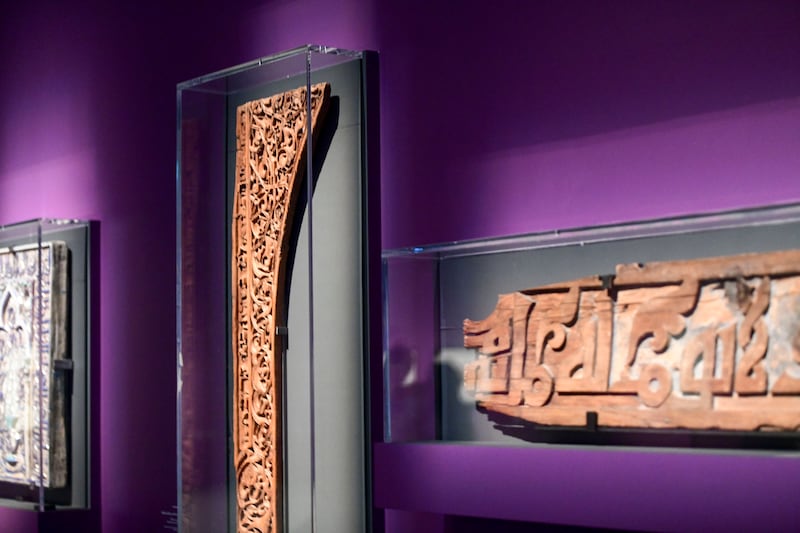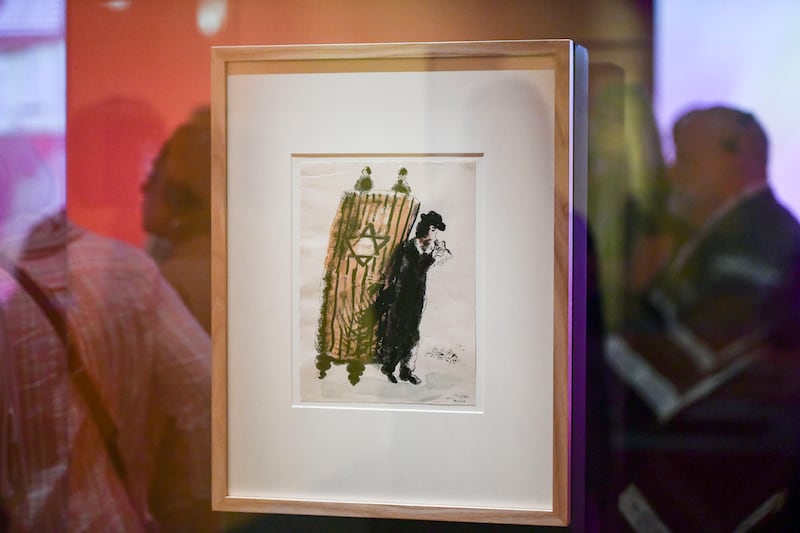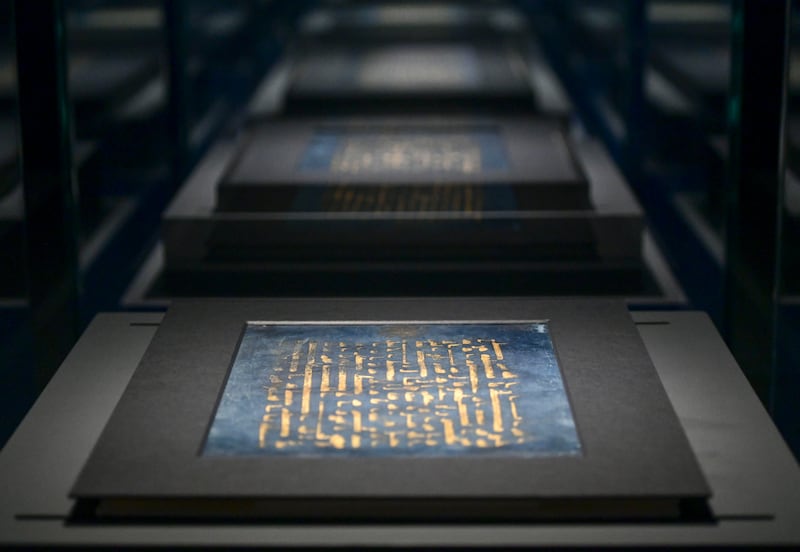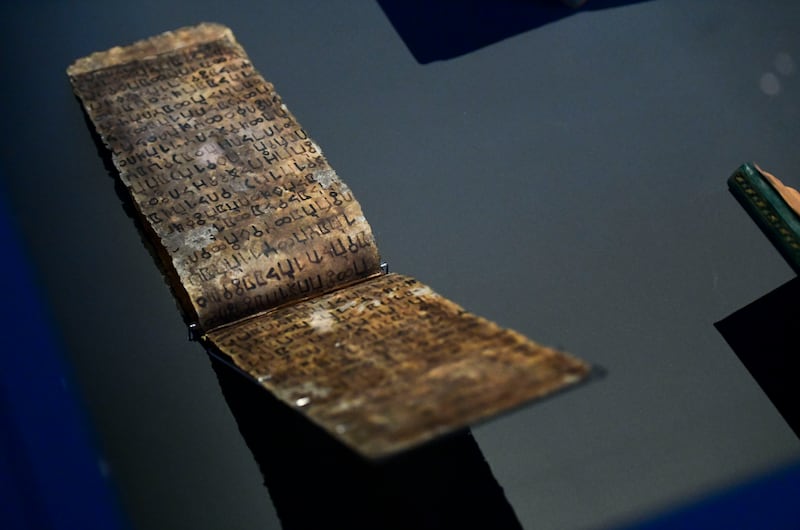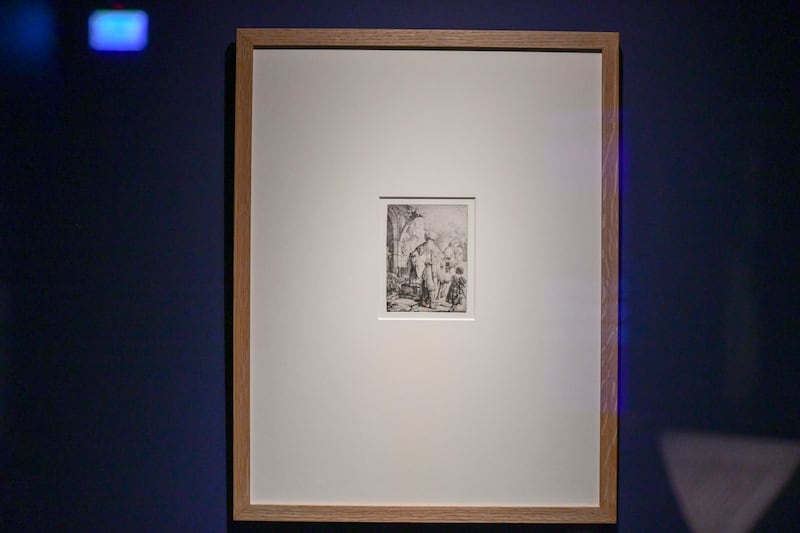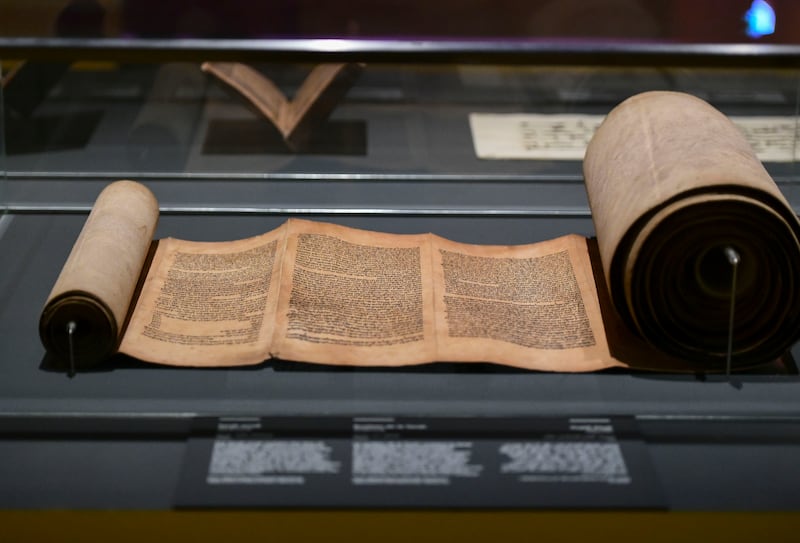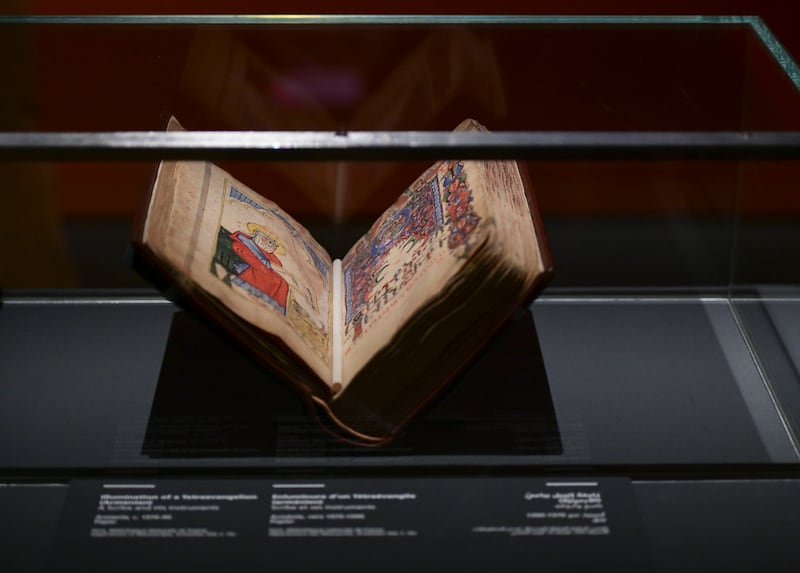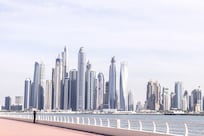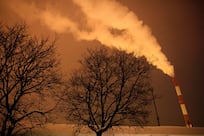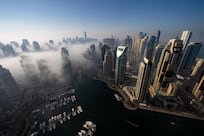The history of books is inextricable from mankind’s yearning of the divine.
Over the centuries, development has been propelled, in large part, by the desire to pay proper homage to the sacred word and ensure the propagation of virtuous attributes. These holy books contained the stories that codified morality. They were keys to becoming an upright subject of God.
At a time when masterpieces were produced by hand, there was a great sense of responsibility that came with book production. Scribes undertook the task of copying holy texts with pinpoint precision, often starting a page over when a mistake was made. To ensure readability was to ensure the proper preservation and recitation of the divine word. Illuminators producing border decorations with paint and gold leaf, meanwhile, aimed to reflect the splendour of the natural world as created by God.
In short, to create beautiful texts was to honour creation itself.
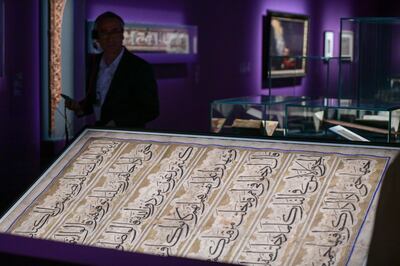
A new exhibition at Louvre Abu Dhabi showcases the art and grace that came with creating these holy books, bringing together some of the oldest and rarest texts of the three monotheistic religions. It also features other artworks, including paintings, trinkets and a light-based commissioned installation by Saudi contemporary artist Muhannad Shono.
Running until January 14, Letters of Light examines the historical conditions in which the holy books materialised. The exhibition is curated by Laurent Hericher, head of the Oriental manuscripts department at the Bibliotheque nationale de France, along with Souraya Noujaim, director of the Islamic Arts department at the Musee du Louvre.
With more than 240 artworks on display, Letters of Light contains striking examples of the Quran, Bible and Torah, showing how their production techniques changed over centuries, reflecting the technological and artistic sensibilities of their time. The exhibition also highlights the interplay of production techniques and designs between the three religions, showing they were not created in a vacuum but were rather the product of shared influence and inspiration.
Louvre Abu Dhabi hosts exhibition on Abrahamic religions
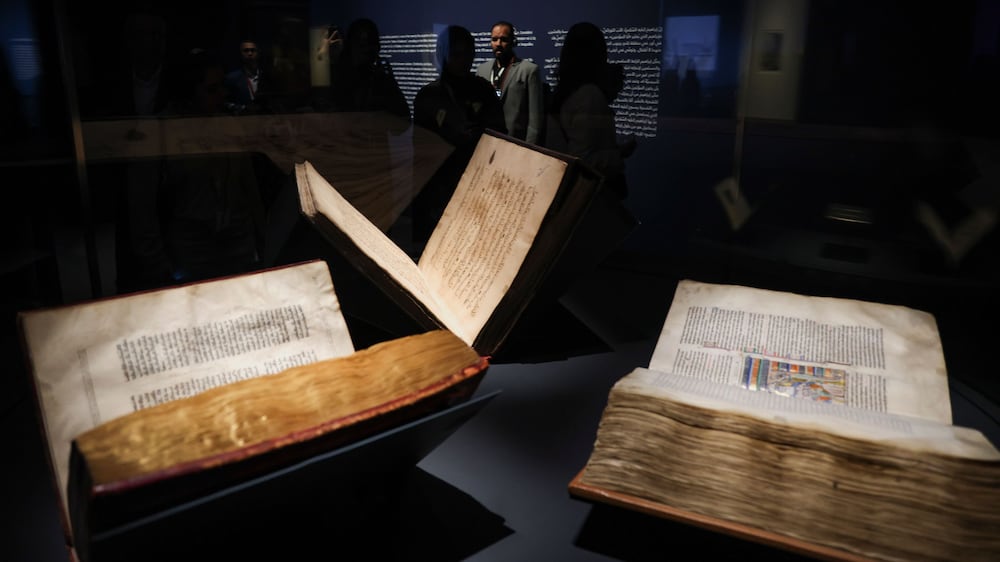
“Our exhibition is not an exhibition about religion,” Hericher says. “It’s an exhibition about books. It’s really a way of going to the origin of the book.”
Letters of Light brings together highlights from the collection of Louvre Abu Dhabi, as well as several pieces on loan, a large share of which come from the Bibliotheque nationale de France. The national library boasts one of the most impressive collections of holy texts from across the world. Letters of Light represents the largest exhibition of the Bibliotheque’s collection outside of France to date.
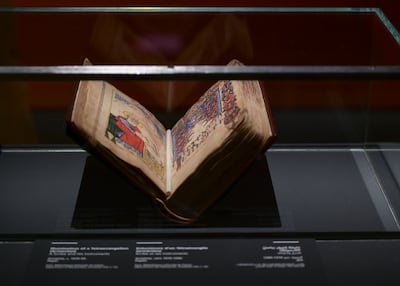
The exhibition opens with a section dedicated to Abraham, showing how the patriarch is a central figure across Judaism, Christianity and Islam. A video presentation highlights key moments from his life, including the story of how Nimrod casts Abraham into the fire, where he is saved by an angel, and the binding of Isaac, when God tests Abraham by commanding him to sacrifice his son.
The section includes several works from across the three religions that depict, in text and illustrations, these key moments. The 12th century Souvigny Bible shows the Abraham’s Bosom, in which believers are gathered in the hands of Abraham, who provides them shelter and marks him as the father of many nations.
A 16th-century Egyptian work of the Quran, meanwhile, is open on the page of Surah al An’am, telling of Abraham’s path to monotheism. A 14th-century parchment of the Torah depicts the sacrifice of Isaac. The section also features etchings by the celebrated 17th-century Dutch painter Rembrandt that portray scenes from Abraham’s life.
Letters of Light includes several landmark works from across the three monotheistic faiths. These include the famous Dead Sea Scrolls, the oldest known manuscripts of the Hebrew bible, which were discovered in the Qumran Caves in the mid 20th century.
“In 1946, a Bedouin was the first to enter one of those caves,” Hericher says. “He found a jar and fragments of the scrolls. The scrolls show that our Bible today is nearly 100 per cent the same as it was in Qumran.”
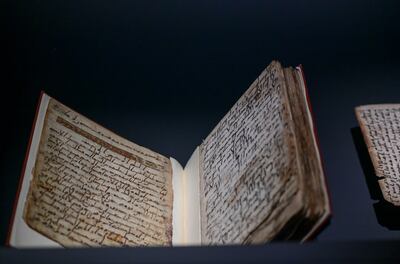
The exhibition also features one of the world’s oldest manuscripts of the Quran, which is believed to have been copied 50 years after the death of the Prophet Mohammed. “The leaves of parchment show the Hijazi script, the oldest [of the Arabic scripts] and has no dots as you find in today’s Arabic. It is one of the most ancient manuscripts of the Quran, together with a fragment in Birmingham and another in St Petersburg. When the fragments were discovered in Egypt they were sent to different libraries and now they are kept in three different places.”
Many of the works show the influence of the three religious cultures on each other. There are wooden engravings from 12th-century Egypt that blend Islamic geometric motifs with Hebrew texts, as well as a metal candlestick dating back to 13th-century Iraq or Syria that is decorated with scenes from the New Testament.
“The candlestick is on loan from the Louvre Museum” says Noujaim, formerly the director for scientific, curatorial and collections management at Louvre Abu Dhabi. “It features Christian iconography within a complete and perfect Islamic aesthetic. It’s signed by a craftsman who is very well-known. There are only a few objects bearing his signature. Here again is a [piece] of Islamic art beyond boundaries.”
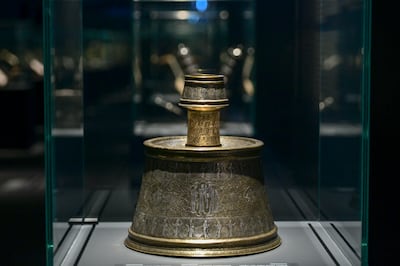
Letters of Light also presents a copy of the famous Gutenberg Bible, the earliest book printed using moveable type and which marked a new age in book production. It also exhibits several folios of the Blue Quran, a striking and mysterious early Quranic manuscript written on blue-dyed parchment and with golden Kufic script. The origin and date of the Blue Quran is a contentious topic in the academic world, and Letters of Light brings together several folios in what is one of the largest collective showings of the manuscript to date.
The exhibition also presents paintings and objects that are significant to its subject matter, including Virgin and Child by Italian renaissance painter Giovanni Bellini, as well as Key to the Kaaba, a 15th-century work created in the name of Sultan al-Malik al-Nasir Faraj of the Burji dynasty of the Mamluk Sultanate of Egypt.
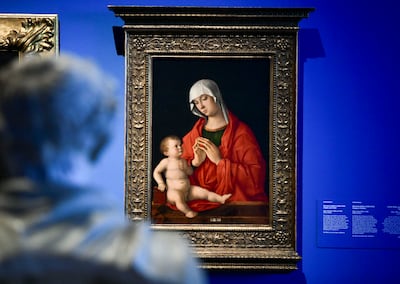
The exhibition also features important archaeological discoveries from the UAE. These include a bronze lamp from a Christian monastery unearthed on Al-Sinniya Island near Umm Al Quwain.
Archaeological efforts have unearthed a number of objects that shed light on the religious life in the UAE more than 1,400 years ago. Friezes discovered in a Christian monastery on Bani Yas dating back to between the 6th and 9th centuries are also on display.
Perhaps most interesting is a gravestone with Hebrew inscription that was found in Ras Al Khaimah. Made of black limestone, it dates from somewhere between 1507 and 1650 and shows a Jewish presence in the UAE, which at the time was under Portuguese rule. The stone was reused as the rim for a well in Ras Al Khaimah until it was discovered in 1977. It remains the only archaeological artefact with Jewish origins found in the country.
While Letters of Light has been years in the making, the exhibition comes at a particular juncture in UAE and regional history. Years in the making, the exhibition comes months after the opening of the Abrahamic Family House, an interfaith complex near Louvre Abu Dhabi on Saadiyat Island.
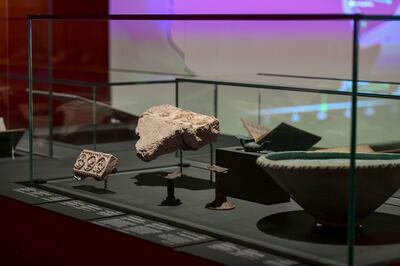
The exhibition, Noujaim says, is a marked continuation of Louvre Abu Dhabi’s global religions and sacred texts gallery, that opened with the museum in 2017. “The programming really made sense for us,” she says. “And I really believe it’s opening at the right moment in Abu Dhabi.”
Letters of Light is an expanded follow-up to an exhibition held in 2005 at the Bibliotheque nationale. The title, at the time, was Torah, Bible and the Quran. “There was also another title, which translates from French as Books of the Word,” Hericher says. However, for the exhibition at Louvre, the curators were set on finding a title that was snappier while still reflecting on the sanctity of the works.
“We finally arrived at Letters of Light in reference to the light that is celebrated in diverse religions,” Noujaim says. In an indirect way, it also calls back to Louvre Abu Dhabi’s motto upon its opening, she adds. “Seeing the world in a new light,” she says. “I think it’s a beautiful conclusion, and opening, to the story.”
Manuel Rabate, director of Louvre Abu Dhabi, says Letters of Light exemplifies the museum’s mission in many ways. “The topics are relevant to what we do in the UAE and the Saadiyat Cultural District,” he says. The opening of the Abrahamic Family House, he says, represents a step forward in interfaith discussion and Louvre Abu Dhabi has a role to play in this conversation.
“We are a museum, so what is our role in this overall context? We are a place of education, a place of knowledge and a place of beauty,” Rabate says. “Since our opening [in 2017], we have done that with respect to dialogue and we strongly believe in the connectivity of humankind, and this is what we have to say in this overall moment and in the Year of Tolerance.”
The museum, he says, also signifies the continuation of the strong ties between local institutions and those in France.
“We are designed to work within that network,” Rabate says. “The Bibliotheque nationale is among the important actors with whom we are looking at the future. But we are also working with many UAE, Arab and regional institutions, as well as private lenders. We’re always trying to root this universal narrative within our extended territory.”
